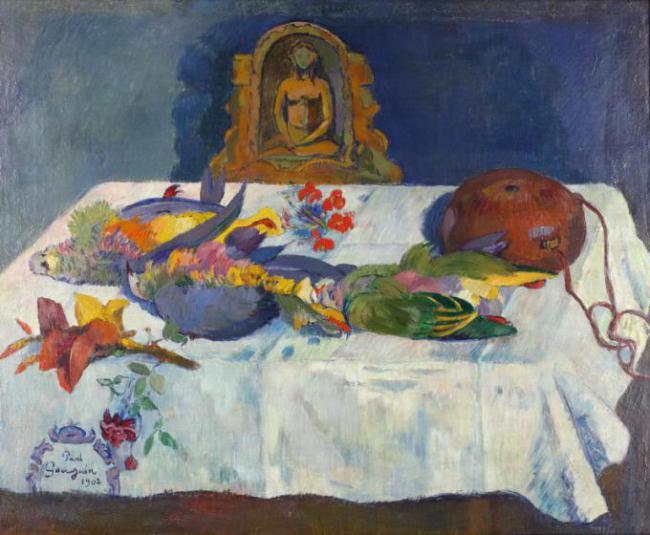PAUL GAUGUIN. STILL-LIFE WITH PARROTS
The still-life was painted by Gauguin in the village of Atuona on the Polynesian island of Hiva Oa. It was preceded by the artist's flight from Tahiti to this far island on the Marquesas archipelago. The dead fowl, plucked flowers, and pumpkin flask are arranged on a travelling trunk covered with a tablecloth and symbolise man's fleeting life on earth. Yet the bright glowing colours and rich brushstrokes, which convey the cares of life, contradict the still-life's gloomy symbolism. In the background is a ceramic statuette of the Tahitian goddess Hina made by Gauguin himself. The still-life attracted the attention of Russian avant-garde artists who saw it at Ivan Morozov's house. Echoes of this picture can be found in many still-life works by Larionov, Goncharova and Rozanova from the 1910s.


62х76; oil on canvas




